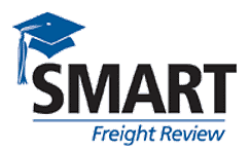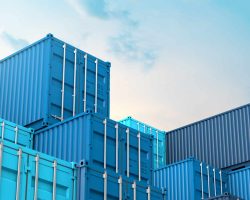On September 13, 2024, the U.S. Trade Representative (USTR) announced its decision to raise tariffs on $18 billion worth of Chinese imports, set to begin on September 27, 2024. This move targets key sectors such as steel, semiconductors, electric vehicles (EVs), and other high-value industries, marking a significant shift in U.S. trade policy aimed at countering China’s alleged unfair trade practices. Ambassador Katherine Tai emphasized that the tariff increase is a direct response to China’s harmful policies, reinforcing the Biden-Harris Administration’s commitment to standing up for American workers and businesses.
Key Details of the Tariff Increases
The tariff hike affects a wide range of products and introduces staggered increases over the coming years. While the first set of increases will take effect on September 27, 2024, additional tariff hikes are scheduled for 2025 and 2026. The upcoming changes will impact products entered for consumption on or after the specified dates, as outlined by the USTR.
2024 Tariff Increases:
- Steel and Aluminum: Increases from 0–7.5% to 25%.
- Lithium-Ion EV Batteries: Rise from 7.5% to 25%.
- Solar Cells: Move from 25% to 50%.
- Semiconductors: Gradually increasing from 25% to 50% by 2025.
- Personal Protective Equipment: Tariffs on items like syringes, needles, respirators, and masks rise to 25%.
By 2026, tariffs on other critical minerals like natural graphite and permanent magnets will also see sharp increases, moving from zero to 25%.
Background and Rationale
This decision follows the USTR’s comprehensive review of China’s trade practices, with a particular focus on sectors where China’s actions have disadvantaged American industries. The White House issued a statement on May 14, 2024, citing the need to combat China’s unfair practices around technology transfer, intellectual property rights, and innovation.
These tariffs are designed to encourage China to correct these practices by targeting sectors that are vital to both economies, including steel, semiconductors, electric vehicles, and medical products. By imposing higher tariffs, the U.S. aims to level the playing field for American manufacturers and prevent further erosion of its industrial base.
What Does This Mean for Businesses?
For businesses importing goods from China, the financial impact of these tariffs will be substantial. Industries dependent on semiconductors, EV batteries, solar energy, and medical supplies will face higher costs, potentially driving up prices for end consumers. For instance, steel and aluminum, crucial materials in construction and manufacturing, will see tariff hikes up to 25%, creating ripple effects across related industries, from automotive to aerospace.
Many businesses may also need to reconsider their supply chain strategies to offset these additional costs. Some might explore alternative markets for sourcing goods or look into renegotiating contracts to manage the increased expense. Those unable to pivot away from Chinese imports may be forced to pass on the cost to consumers, contributing to potential inflationary pressures in the U.S. market.
The Global Trade Implications
The U.S. is not only focused on defending its domestic industries but is also sending a strong message to China regarding compliance with international trade norms. This tariff escalation could further strain the U.S.-China relationship, which has already been fraught with tension in recent years, especially under the Section 301 tariffs initiated during the Trump administration.
Experts caution that this move could provoke retaliatory measures from China, leading to a tit-for-tat scenario where both countries impose additional tariffs on each other’s goods. This, in turn, could escalate the trade war, disrupt global supply chains, and cause market volatility. With semiconductors—the backbone of modern technology—set to be hit with 50% tariffs by 2025, industries reliant on these components, such as consumer electronics and automotive, could face global supply constraints.
Future Outlook
Businesses affected by these tariffs should prepare for continued uncertainty in the trade landscape. The phased tariff increases through 2025 and 2026 suggest that the U.S. intends to maintain a tough stance on China over the long term, especially in sectors considered vital to national security and technological leadership.
The USTR has indicated that it will soon launch an exclusion process for machinery used in domestic manufacturing, providing an opportunity for some businesses to seek exemptions. Additionally, a comment period for proposed modifications to tariff rates on key products such as tungsten, wafers, and polysilicon will soon be open, allowing stakeholders to voice concerns and request adjustments.
How Universal Logistics Can Help
Navigating the complexities of the evolving trade landscape is no easy task, but Universal Logistics is here to help. With decades of experience in customs brokerage and freight forwarding, we are well-equipped to assist businesses in adapting to these changes. Our SMART Customs Review service is specifically designed to ensure compliance with shifting regulations, helping you avoid costly penalties under the Administrative Monetary Penalty System (AMPS).
We also offer tailored freight forwarding solutions that can help mitigate the impact of higher tariffs by optimizing transportation routes and reducing supply chain inefficiencies. If your business is affected by these tariff changes, reach out to Brian Rowe, Director of Customs Compliance & Regulatory Affairs, to discuss strategies that can minimize disruption and protect your bottom line.
For more information on how Universal Logistics can support your business during these challenging times, contact our team or visit our website.















